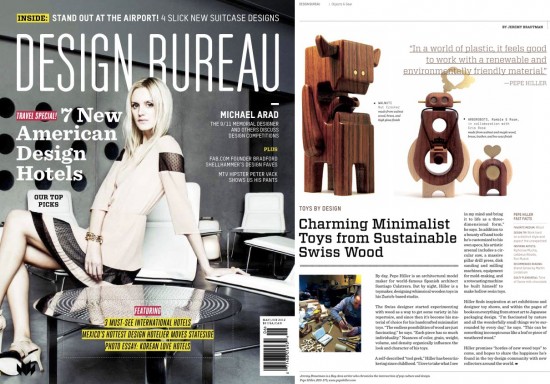Toys by Design: The Pepe Hiller Interview
It appears that I’ve gotten a little bit behind in posting the extended online versions of my Toys by Design column interviews! These interviews appear as page-long featurettes in the ‘Objects’ section of sexy print magazine, Design Bureau. The new travel-themed issue (January 2013) with my latest Toys by Design column is on newsstands now, and I’ll post the full interview as soon as possible. You can always subscribe to Design Bureau magazine or pick up individual issues here!
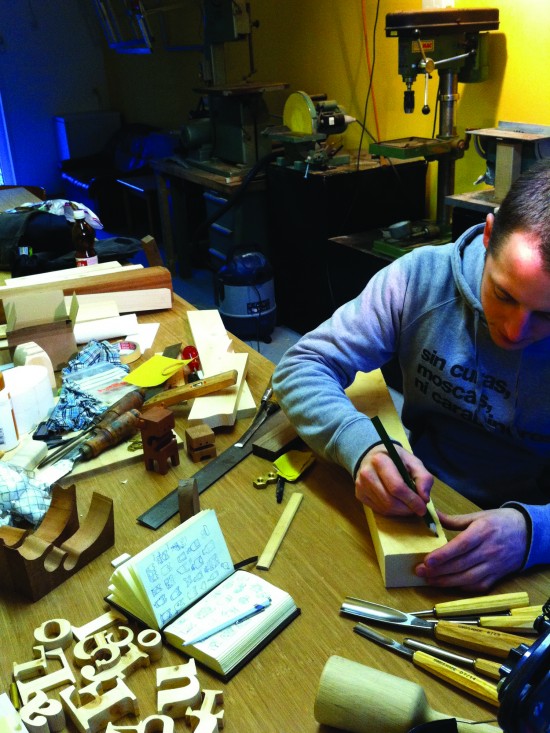
Sometimes I interview an artist or designer who I’ve never met, and despite being on different continents and coming from disparate cultures, I think: Man, I really like this person! Such is the case with Switzerland-based Pepe Hiller. Whether he’s “geeking out” on tools or openly sharing his processes, one gets the feeling that the designer behind the adorable “wood chaps” is a really nice guy himself. Pepe and I had this chat about a year ago, and the interview I wrote was published in the May/June 2012 issue of Design Bureau. Here now is the full conversation with Hiller’s thoughts on life in Zurich, what inspires him, why he loves working with wood, hand-crafted vs. 3D-printing and why “small stuff” is underrated. Enjoy!
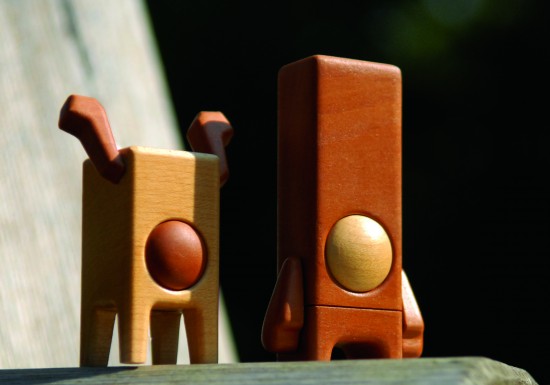
JB: You grew up playing with toys in Zurich, and now you design your own toys in Zurich. Please tell us a bit about the events that occurred in between.
PH: Tinkering at my workbench on new projects and planning new creations has been a labor of love for me since childhood. Even now, as an adult, I just love to experiment and bring what I see in my mind to life as a three-dimensional form. I did a four-year apprenticeship as an architectural model maker here in Zurich. While there, I learned about all kinds of different materials from cork to expanded polystyrene to chromium steel. I also learned a lot of techniques and production processes that really help me now as toy designer. I received my Bachelor of Design degree in Industrial Design/Scenographical Design from Zurich University of the Arts. Now I still work in Zurich, and I have my own wood workshop here to create my toys.
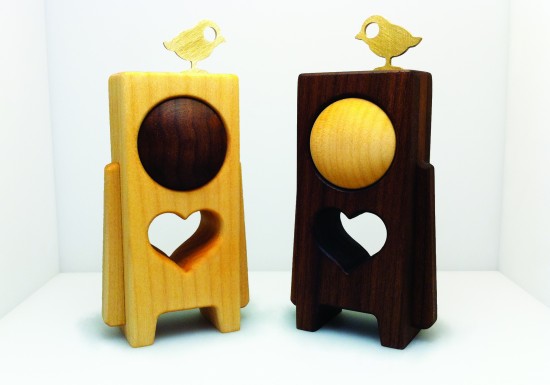
Why Zurich?
Zurich is just a beautiful city; it’s not large and straggly, but it’s large enough to give you everything you need. We have a lake and are surrounded with a lot of green space. The public transportation and culture here are especially good, so the quality of life is high. This of course also means the cost of living is pretty high, and to work as a craftsman here exporting most of my work isn’t easy all the time. Still, I love to work here as we have an exceptionally large and well-connected culture sector beyond all the finance business that people know about. Zurich has a vibrant art scene and some very good graphic and typography designers. Art toys are not that popular over here, but I’m working on it!
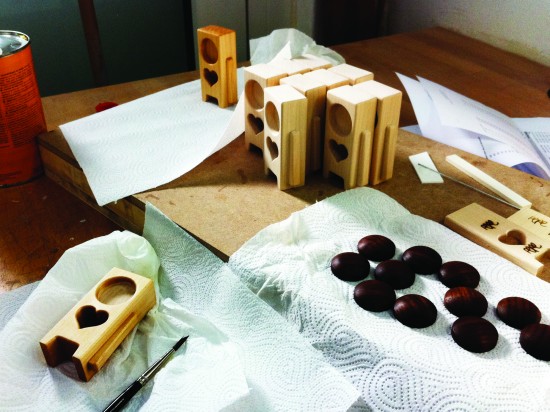
Because I know all too well that art toys don’t pay the bills, what do you do for a living?
It‘s true; it’s very hard to do art toys full time and to live from it. So besides chopping new wood creations at my studio, I work as an architectural model maker for the well-known Spanish architect, Santiago Calatrava. I really love my job! It’s great to work on very impressive projects from all over the world and build Calatrava’s designs on a small scale. Our team usually needs hundreds of hours of handcrafted work to construct a model, often with mechanics for movable parts and built-in lightning.
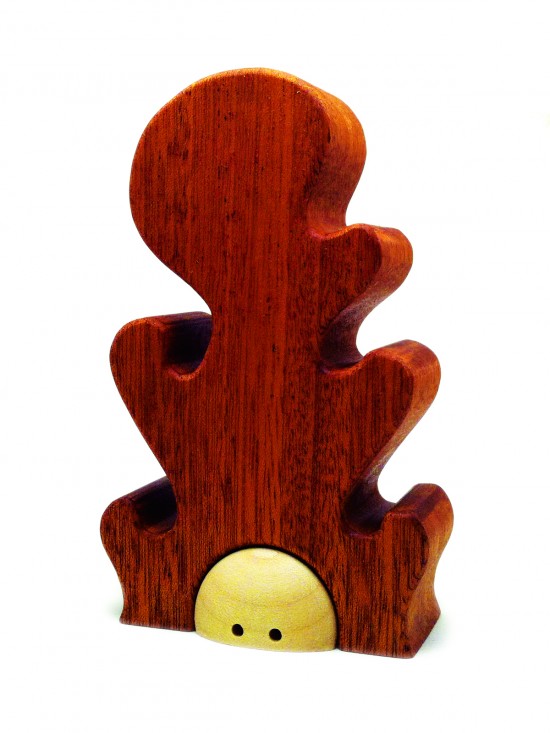
I like that you work with mediums that aren’t necessarily popular in the ‘designer toy scene’. What attracted you to wood?
At my day job, I mainly work with different kinds of plastics. So as a designer with a variety-seeking behavior, I started to work with wood for my personal projects. The endless possibilities of wood and its unique quality to create things with is just fascinating. As wood is a growing resource, each piece of wood has so much individuality. Because of the grain and color variations, my wood toys are all true one-of-a-kind pieces.
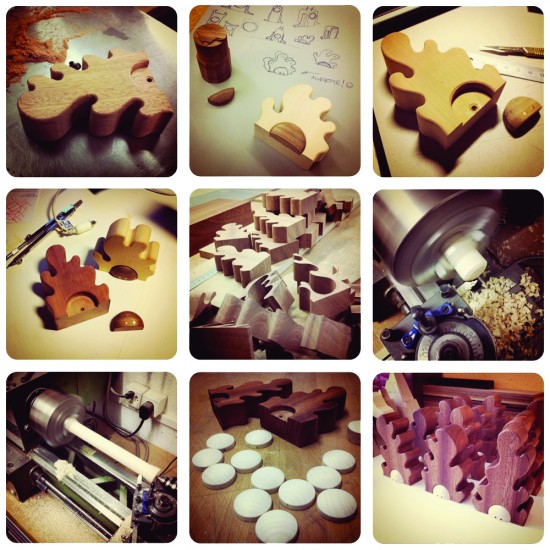
Where do you source your wood, and how do you decide which type(s) of wood to use for each of your characters?
I get my raw sheets of wood from a carpenter or a lumber mill. I usually work with local woods and use only certified wood if it’s not from Switzerland. The wood I choose for my creations influences me a lot in different ways. There’s the grain and the color, as well as density, weight and volume. I’m always on the lookout for unique woods like Moor Oak, conserved for over 600 years in the deepest Moor up to the gnarly Fir Wood from the highest Swiss Alps!
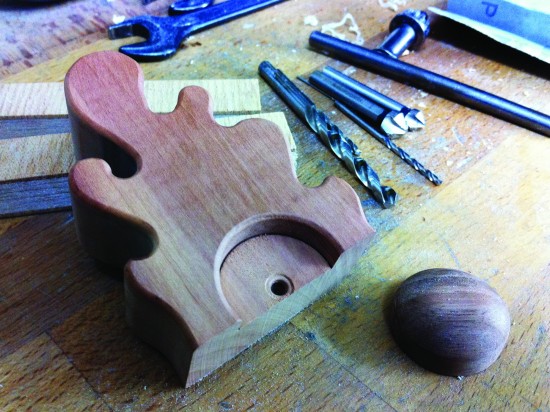
When you design something, are you consciously thinking about the environment and sustainability?
Eco-friendliness is something I often hear about in terms of my wood creations. In a world of plastic like the art toy world, it’s a good feeling to work with a material that’s renewable and environmentally friendly. This doesn’t mean I’ll stop working with resin (it’s just way too much fun), but I always try to choose the material for each project wisely and use the best medium to achieve the desired final product.
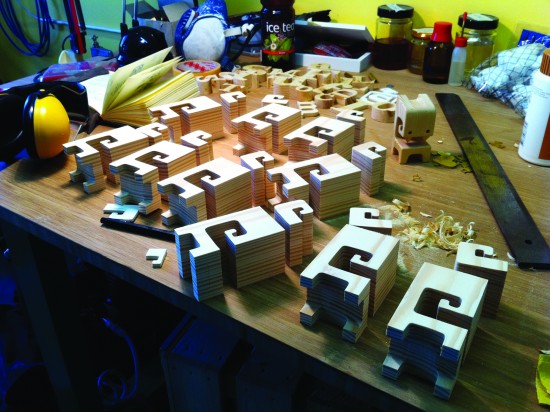
How did you get into making toy art? When did you make your first independent creation? What was it?
It all started with my first completely self produced toy, a tiny resin toy called the Datahunter! It was a multi-part resin series I made from scratch with a tiny USB flash drive in the character’s belly. At the time, I didn’t have any experience and had to start from scratch. I learned so much about prototyping, molding, casting, painting and packaging with that project. It was a lot of work, but quite a success as I’ve produced about 150 pieces, all cast and painted by hand. Up until that point, I’d never heard about art toys before. But through creating this little guy, my interest in the designer toy scene was sparked and soon I was completely addicted!
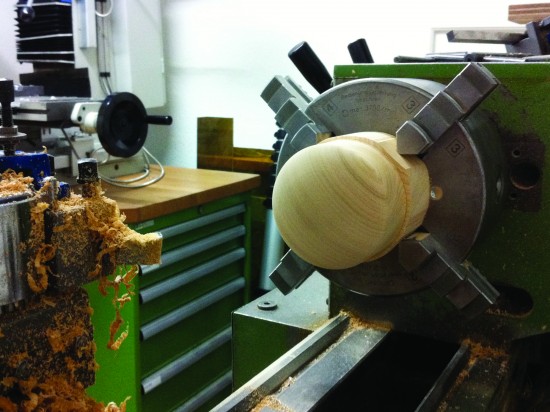
How do you describe your toy art to other people? And why is “small” so often underrated?
I mainly do self-produced wood designer toys for adult collectors. My high quality and handcrafted wooden creations are only available in limited quantities. With the designs of my figures, I often follow a charming minimalism. I work with clean shapes and a combination of blocky and organic forms.
Small things and artwork are usually not that impressive at first glance, and it’s not easy to stage a huge show with them. It’s very important to give them their needed space! A clever way of displaying small things can also make the difference that they don’t get overshadowed by big and pushy work. For myself, it‘s always a question of resources and possibilities.I tend to do small art because I can handle it best at the moment. But like most toy designers, I have plans to go large and conquer the world with huge twenty feet tall wood toys!
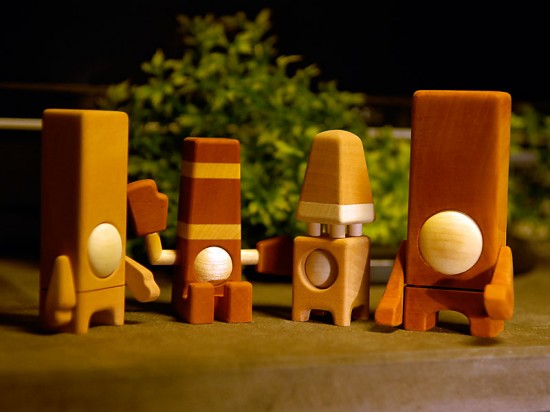
Your work is machined, but it never comes across as cold. Rather, it feels warm and hand-made. Can you describe your design process?
I usually have a vague idea in my head or a small doodle of a character in my sketchbook that I want to bring to life. I then choose a nice sheet of wood or chunk of clay and just start working on it. I define the rough proportions and see where it leads. When the shape is where I want it, I shift over to an often time intense progress to completing the figure with the finishing touches. I don’t carve my figures by hand out of raw wood and I use machines, but there are always so many working steps involved to create my toys and a lot of these have to be done by hand. Everyone in the low-brow toymaking scene can tell you a thing or two about those endless hours of sanding prototypes, no matter what the material!
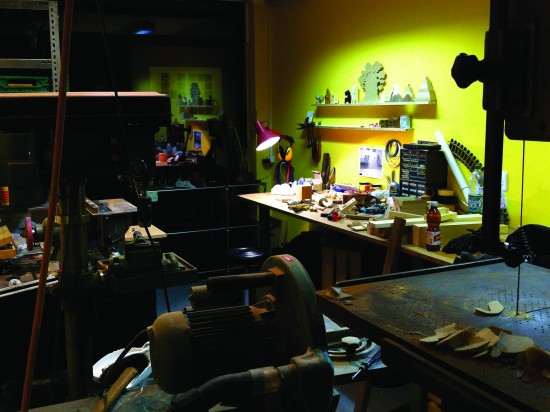
Please tell us a bit about the studio…do you work with other people? What equipment do you use?
I usually work alone, but I like to do collabs with artists from around the world. My studio is pretty small, but just perfect for now. It’s equipped primarily for wood-working and resin-casting. I don‘t have the space for large machines, but there’s a circular saw, a massive pillar drill press, a disk sanding machine, a milling machine, a compressor and pressure tank for the silicone molds and my self-built rotocasting machine for casting hollow resin figures… and lots of hand tools of course. A recent addition to the machine shop was a slightly older but very precise Swiss-made bandsaw. I was looking for one for years, and I’m so happy I’ve finally hunted one down! This saw allows me to cut very close curves which is essential for my wood designs! I work with a lot of second-hand and old machines, but usually these are way more durable than the cheap stuff from the DIY stores.
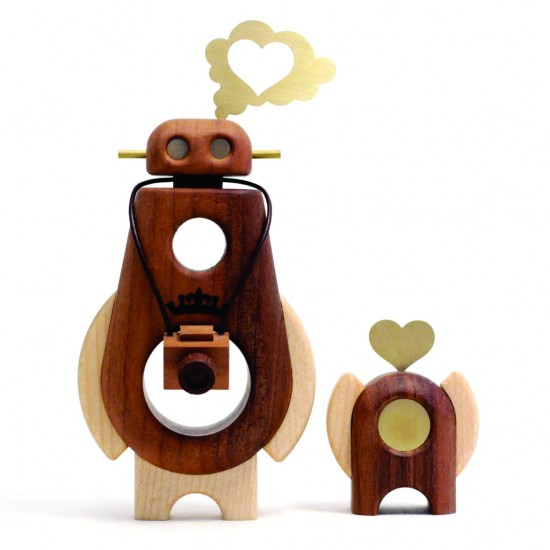
You make some of your own equipment and also post your tutorials. That’s nice of you, but why share your secrets?
First of all, I think I’m one of those people you’d call a “tool geek” or something like that! I just love to work with high-quality tools if these are affordable. I customize a lot of my tools for better handling or other needs. I also create my own tools or even construct my own machines if necessary. So why not document and share the process of creating my stuff? Of course, anybody can now try to copy my ideas, but experience over a long time in a field of work isn’t a thing that another person can simply buy or steal. A lot of people would love to try out things like doing a silicone mold for a figure, but they just don’t know how to start. So for me it’s great if I can help these folks with tutorials and advice on complex tasks. When I started creating my own toys, I was so glad I had support from the old-stagers! I think this is something I really love about the toy making community: everybody is very kind and very helpful in our little industry!
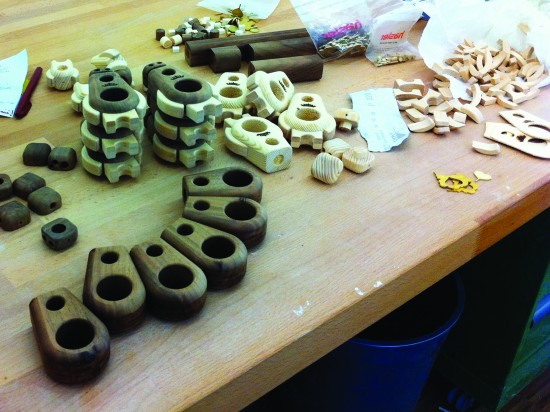
How long have you been working with rapid prototyping machines? What do you think of the growing consumer interest in 3D printing?
I had the chance to first tip my toe into rapid prototyping about three years ago. We have a 3D printer at work, and we build a lot of our design and architecture models with digitally modeled parts. I have to say it’s amazing what’s possible with it, and the printing systems are still in an early stage of development. I guess the possibilities will be endless, and it even could be kind of revolutionary in some fields. But there will be always be a need for handmade work. In a time where we can produce everything so fast, craftmanship and handmade work will also always be in demand. This kind of work has something very personal and yield a unique kind of quality.
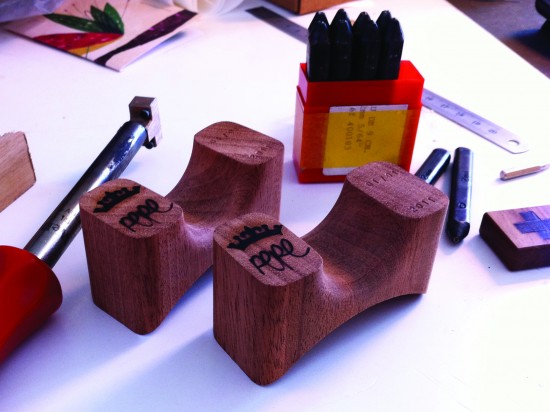
Which designers, modelers and architects have influenced you or helped you on your way?
Since I’m a person who loves to play on all design playgrounds myself, there are a lot of people whose work I admire. This list could goes from the Art Noveau artist Alfonse Mucha to the conceptual architect Lebbeus Woods to contemporary sculptor Ron Mueck. There are also a lot of designers from the art toy scene whose work I follow closely. I try to get an idea where we’re all headed with our niche art.
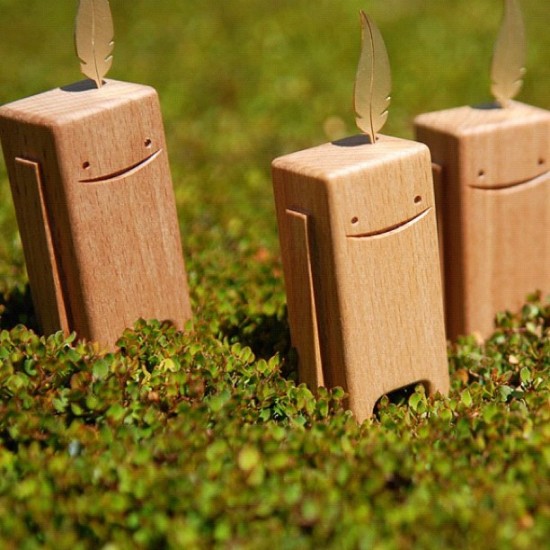
What inspires you?
I’m fascinated by nature and all the wonderfully small things we’re surrounded by every day. This could be inconspicuous things like a leaf or piece of weathered wood. I also love to visit exhibitions of art and designer toys. Besides crawling through the web for amazing work, a great resource of inspiration for me are always art books about all kind of different themes from Japanese traditional packaging design to street art and comic books.
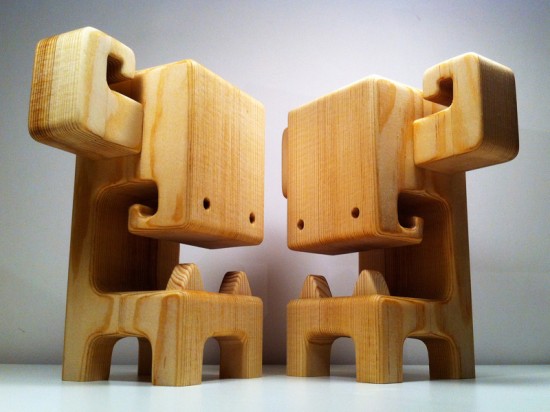
What’s coming up next???
Besides a few commissions and shows in sight, I’m already working on a bunch of collaborative wood projects with very talented artists from the UK and USA. One of these will be a new series of wood-crafted Arborobots with Cris Rose, a toy designer from London. I’m also working on pushing the very small art toy scene here in Switzerland. Hopefully, we can make it more accessible for a wider audience and new collectors. And of course, there will be hordes of new wood toy designs crafted by me for shows and for my own online store!
Keep up with Pepe Hiller’s latest art toys at: http://www.pepehiller.com!

